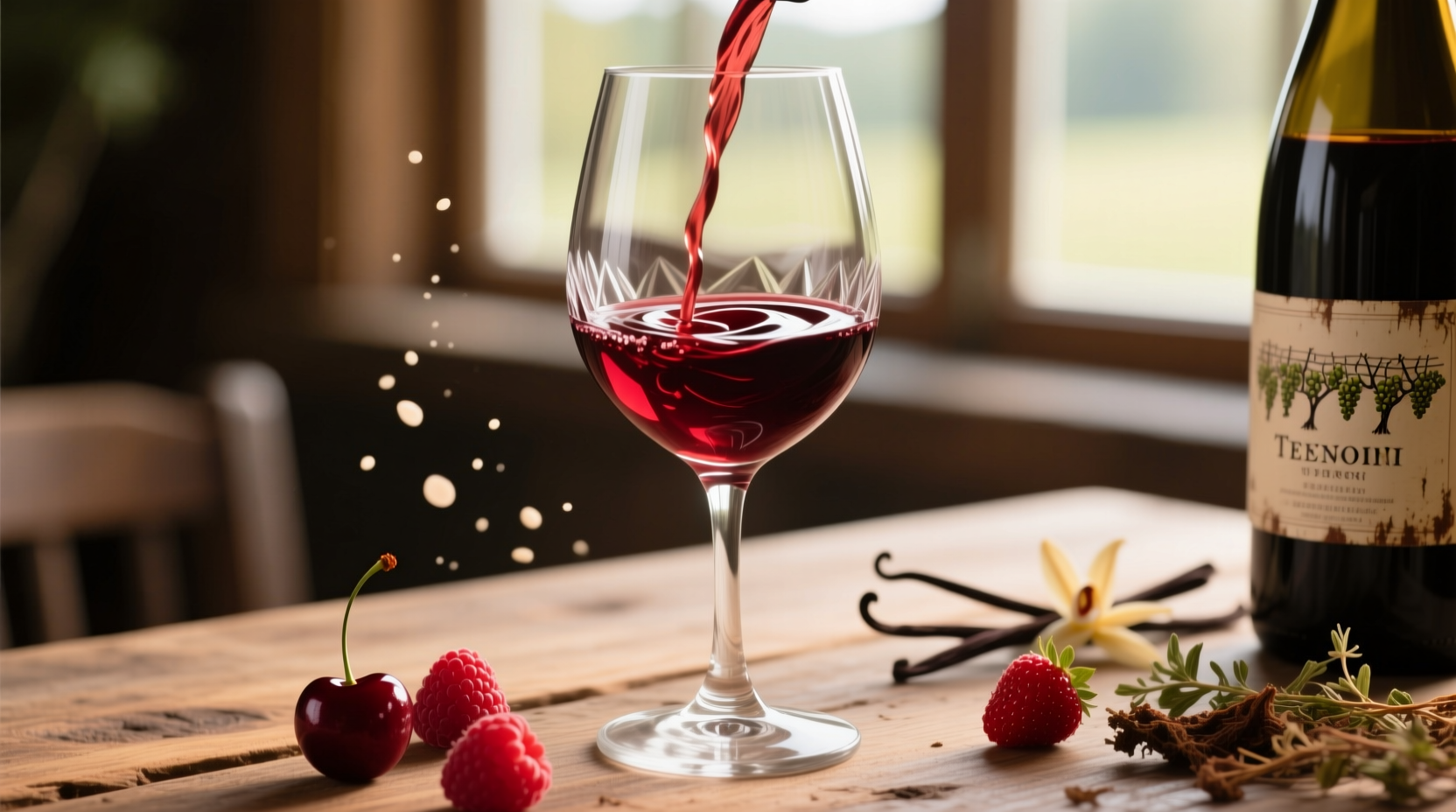Your Quick Reference Guide to Pinot Noir's Signature Taste
Before diving deeper, let's break down exactly what you'll experience when tasting a classic Pinot Noir. Unlike heavier red wines that hit you with intense tannins and dark fruit flavors, Pinot Noir offers a more delicate profile that reveals its complexity gradually.
| Flavor Category | Specific Notes | Intensity Level |
|---|---|---|
| Primary Fruit | Red cherry, raspberry, strawberry, cranberry | Medium to High |
| Secondary Notes | Mushroom, forest floor, wet leaves, baking spice | Low to Medium |
| Mouthfeel | Silky tannins, bright acidity, light-medium body | Defining characteristic |
| Alcohol Level | Typically 12.5-14% ABV | Moderate |
This distinctive flavor profile explains why wine enthusiasts often describe Pinot Noir as the "heartbreak grape"—it's notoriously difficult to grow but produces some of the most elegant and complex wines when done right. According to research from the University of California, Davis Department of Viticulture & Enology, Pinot Noir's thin skins and tight clusters make it particularly sensitive to terroir, resulting in significant flavor variations based on where it's grown (wineserver.ucdavis.edu).

What Makes Pinot Noir Taste Different From Other Reds
If you've ever wondered what does pinot noir taste like compared to merlot, the difference is striking. While Merlot delivers plush plum and chocolate notes with softer acidity, Pinot Noir offers brighter red fruit flavors with more pronounced acidity and earthiness. This distinction comes down to several key factors:
- Skin thickness: Pinot Noir has some of the thinnest grape skins among red varieties, resulting in lighter color and lower tannins
- Acidity levels: Naturally higher acidity gives Pinot Noir its characteristic freshness and food-friendliness
- Terroir expression: Pinot Noir acts like a "sensory translator" of its environment, making regional differences more pronounced than in many other varieties
Understanding is pinot noir sweet or dry is another common question. Despite its red fruit flavors, quality Pinot Noir is almost always dry (not sweet), with any perceived sweetness coming from ripe fruit characteristics rather than residual sugar. The Wine & Spirit Education Trust confirms that most premium Pinot Noirs contain less than 4 grams of residual sugar per liter—well below the threshold for dry wines.
How Terroir Shapes Pinot Noir's Flavor Profile
Pinot Noir's reputation as the ultimate expression of terroir means its taste varies dramatically depending on where it's grown. Consider this evolution of Pinot Noir characteristics across major regions:
| Region | Climate Influence | Signature Flavor Notes | Classic Example |
|---|---|---|---|
| Burgundy, France | Cool continental | Red cherry, raspberry, earth, mushroom, subtle spice | Burgundy reds |
| Willamette Valley, Oregon | Cool maritime | Bright red fruit, floral notes, balanced acidity | Oregon Pinot Noirs |
| Central Otago, New Zealand | Continental with large diurnal shifts | Intense cherry, spice, vibrant acidity | New Zealand Pinot Noirs |
| Sonoma Coast, California | Cool Pacific influence | Ripe red fruit, baking spice, silky texture | California Pinot Noirs |
This regional variation demonstrates why what does pinot noir taste like doesn't have a single answer—it's a chameleon that reflects its environment. Research published in the American Journal of Enology and Viticulture shows that Pinot Noir grown in cooler climates typically expresses more red fruit and higher acidity, while warmer climate examples develop darker fruit notes and softer structure (www.ajevonline.org).
How to Taste Pinot Noir Like a Pro
Getting the most from your Pinot Noir requires understanding how to describe pinot noir taste accurately. Follow this simple tasting sequence:
- Observe: Note the pale ruby color (much lighter than Cabernet Sauvignon)
- Swirl: Release aromas by swirling gently in a large-bowled glass
- Sniff: Identify primary fruit notes before detecting earthier secondary characteristics
- Sip: Let the wine coat your palate to assess tannin structure and acidity balance
- Consider: How the flavors evolve from initial taste through the finish
Temperature matters significantly for Pinot Noir. Serving at 55-60°F (13-16°C) preserves its delicate aromas—too cold suppresses flavor, while too warm emphasizes alcohol. This precise temperature guidance comes from sensory research conducted by the Institute of Vine and Wine Science in Bordeaux, which found optimal expression occurs within this narrow range.
Perfect Food Pairings for Pinot Noir
Pinot Noir's versatility makes it one of the most food-friendly red wines. Its bright acidity cuts through rich dishes while its delicate fruit complements subtle flavors. Try these pairings based on regional styles:
- Burgundian style: Duck à l'orange, coq au vin, mushroom risotto
- Oregon style: Roasted salmon, grilled chicken with herbs, beetroot salads
- New World style: Seared tuna, pork tenderloin, dishes with earthy spices
Avoid pairing Pinot Noir with heavily charred meats or intensely spicy foods, which can overwhelm its delicate profile. The wine's moderate tannins mean it works beautifully with dishes that might clash with bolder reds—a perfect example of why does pinot noir taste different from other red wines in practical terms.
Common Misconceptions About Pinot Noir
Let's address some frequent misunderstandings about this elegant wine:
- "Pinot Noir is always light-bodied": While generally lighter than Cabernet, some New World examples reach medium-plus body while maintaining Pinot's characteristic elegance
- "All Pinot Noir tastes like cherry": The flavor spectrum ranges from tart cranberry to ripe strawberry depending on ripeness and region
- "Pinot Noir doesn't age well": Top Burgundies can develop beautifully for 10-15 years, gaining complex tertiary notes of forest floor and leather
Understanding these nuances helps answer the fundamental question of what does pinot noir taste like more completely. As Master of Wine Mary Ewing-Mulligan notes, "Pinot Noir's magic lies in its ability to express both fruit purity and earthy complexity simultaneously—when balanced perfectly, it's the most hauntingly beautiful of all red wines."











 浙公网安备
33010002000092号
浙公网安备
33010002000092号 浙B2-20120091-4
浙B2-20120091-4